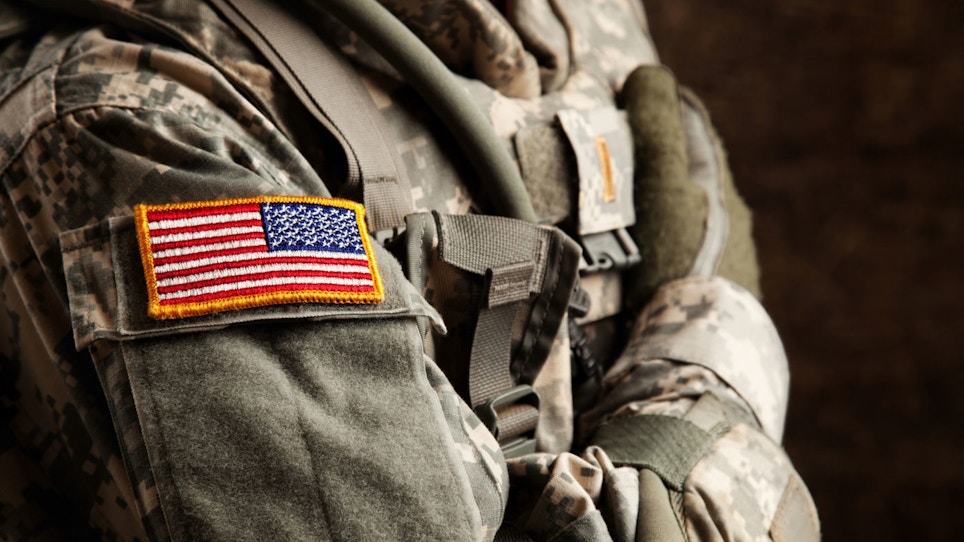Each of the military services of the United States has distinctive uniforms and insignia. Over the years, they have created regulations on how these are worn by their members, whether work, dress or ceremonial.
For the U.S. Army, it is Army Regulation 670-1, “Wear and Appearance of Army Clothing and Insignia,” and an associated pamphlet with specific policies and measurements for insignia.
If you own a store where you sell items to soldiers, you will often hear them asking if items such as boots are AR 670-1 compliant. Over the years, the Army has tried various schemes to certify boots, which are the number one private purchase items for soldiers. Boot manufacturers change models too quickly, and certain aspects of the guidelines can be open to interpretation. If a manufacturer offers an AR 670-1 boot, they’ll let you and the customer know in hangtags or other advertising literature. Having said that, it’s a good idea to familiarize yourself with the guidelines.
U.S.-manufactured goods (like boots), required under the Berry Amendment, only pertains to those items purchased and issued by the Department of Defense. Individuals are under no such restriction and may purchase and wear foreign-made items, so long as they meet clothing regulations. That goes for all services, and not just the U.S. Army. However, with some services there is very little leeway in types of boots authorized. While the Army and Air Force have the most liberal guidance for footwear, the Air Force requires sage green boots for wear at home stations, limiting choices for Airmen.
While AR 670-1 governs basic issue clothing, there are also organizational clothing and individual equipment (OCIE) items that are referred to as “TA50.” That name is derived from common table of allowances (CTA) 50-900, which is a listing of specialized clothing and equipment issued to soldiers based on such factors as type of unit, military occupational specialty of special duty (such as drill sergeant), and local climate. The Army classifies the climate in eight different zones, and a soldier may be issued certain clothing and equipment even if they are not in a unit that deploys. For example, a dental specialist assigned to a clinic at Fort Drum in upstate New York may be issued the same extreme cold weather clothing system as members of the 10th Mountain Division, despite never leaving the clinic. Soldiers draw their TA50 from a central issue facility (CIF) located on each post, however, many special operations units also have CIFs where they store and issue equipment provided by USSOCOM.
The U.S. Air Force uniform regulation is Air Force Instruction 36-2903, “Dress and Personal Appearance of Air Force Personnel.” Field equipment is known colloquially as “deployment gear” and is issued in preconfigured bags. The Air Force often issues U.S. Army TA50 items to its deploying troops, but decisions on additional items are usually left up to local units and much of it is accomplished via local purchase. Flight clothing is strictly regulated due to its fire-resistant nature and is only procured through approved sources.
The most current version of the U.S. Marine Corps clothing regulations is “Marine Corps Order P1020.34G.” There is no doubt that the Marines have the best-looking uniforms, but they are very strict on what clothing and equipment can be worn, leaving few options. Their field equipment is called “Deuce Gear,” which comes from “782 Gear,” in reference to the form a Marine signs as a receipt for his equipment.
The U.S. Navy Uniform Regulations are referred to as “NAVPERS 15665I.” NAVPERS is for naval personnel. The Navy’s SEABEEs (phonetic for Construction Battalion) are outfitted with specialized combat clothing and equipment through an agreement with the U.S. Marine Corps. The Navy transfers funds to the Marines, which purchases equipment for them. Since the institution of the Naval Expeditionary Command, some of the other warfare communities in that command have begun using the same method, otherwise, Navy units issue a wide variety of field equipment acquired through local purchase. The Army will issue TA50 to sailors deploying with them.
Even the U.S. Coast Guard has “COMDTINST M1020.6I,” referred to simply as “uniform regulations.” The Coast Guard shares some dress uniform items with the Air Force, although a version of their dark blue Operational Dress Uniform is also worn by the Public Health Service and National Atmospheric and Oceanographic Agency. Although neither is part of DoD, they are uniformed services of the United States.
In many cases, the services have adopted items initially issued to Special Operations Forces such as MultiCam clothing, which eventually led to the Army’s recently revised Army Combat Uniform in the Operational Camouflage Pattern. Another example is the U.S. Navy’s new Type III Naval Working Uniform. Its green camouflage pattern was initially developed for use by Navy SEALs, and was later adopted for use by the entire Navy. Despite such specialized items, SOF operators are still required to maintain uniforms of their parent services.
Each service has developed a guide to wear of its respective uniform. Additionally, they all issued specialized clothing and equipment. Web searches will reveal the intricacies of these directives and give you additional background to better serve your military customers.
Featured image credit: iStock





